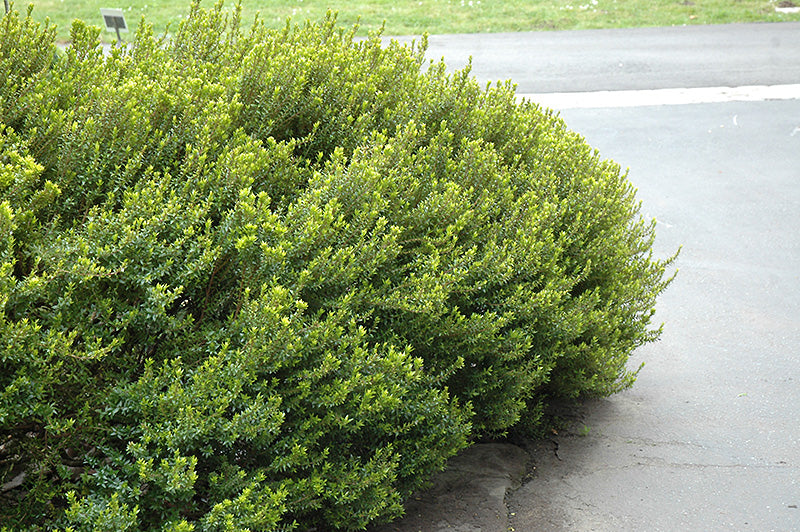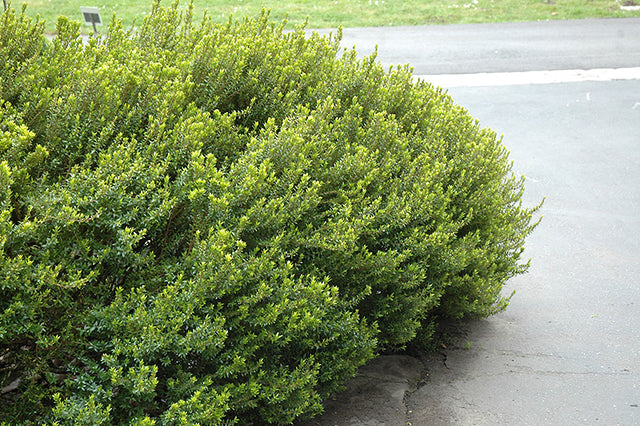Dwarf Myrtle features showy fragrant creamy white flowers along the branches in mid spring. It has attractive dark green evergreen foliage. The small fragrant pointy leaves are highly ornamental and remain dark green throughout the winter. It produces navy blue berries in late summer.
Landscape Attributes
Dwarf Myrtle is a dense multi-stemmed evergreen shrub with a more or less rounded form. Its relatively fine texture sets it apart from other landscape plants with less refined foliage.
This is a relatively low maintenance shrub, and should only be pruned after flowering to avoid removing any of the current season's flowers. It is a good choice for attracting birds, bees and butterflies to your yard, but is not particularly attractive to deer who tend to leave it alone in favor of tastier treats. It has no significant negative characteristics.
Dwarf Myrtle is recommended for the following landscape applications;
- Mass Planting
- Border Edging
- General Garden Use
- Groundcover
- Topiary
- Container Planting
Planting & Growing
Dwarf Myrtle will grow to be about 24 inches tall at maturity extending to 3 feet tall with the flowers, with a spread of 3 feet. It tends to fill out right to the ground and therefore doesn't necessarily require facer plants in front. It grows at a slow rate, and under ideal conditions can be expected to live for approximately 10 years.
This shrub does best in full sun to partial shade. It does best in average to evenly moist conditions, but will not tolerate standing water. It is not particular as to soil type or pH. It is somewhat tolerant of urban pollution. This is a selected variety of a species not originally from North America.
Dwarf Myrtle makes a fine choice for the outdoor landscape, but it is also well-suited for use in outdoor pots and containers. Because of its height, it is often used as a 'thriller' in the 'spiller-thriller-filler' container combination; plant it near the center of the pot, surrounded by smaller plants and those that spill over the edges. It is even sizeable enough that it can be grown alone in a suitable container. Note that when grown in a container, it may not perform exactly as indicated on the tag - this is to be expected. Also note that when growing plants in outdoor containers and baskets, they may require more frequent waterings than they would in the yard or garden.
Details
Botanical Name
Myrtus communis 'compacta'
Common Name
Compact Myrtle
Hardiness Zone
- 8a
Appearance
Max Height
24 inches
Max Spread
3 feet
Plant Form
Foliage Colour
- Dark Green
Fall Colour
- Dark Green
Flower Colour
- Creamy White
Edible
Edible Component
Edible Harvest Period
Edible Use
Fruit Colour
- Navy Blue
Growing
Flowering Period
Mid Spring
Moisture
Average
Sunlight
Full Sun to Partial Shade
Maintenance
Low
Deer Resistance
YES
Get more information about this plant and others with our comprehensive plant finder tool.




